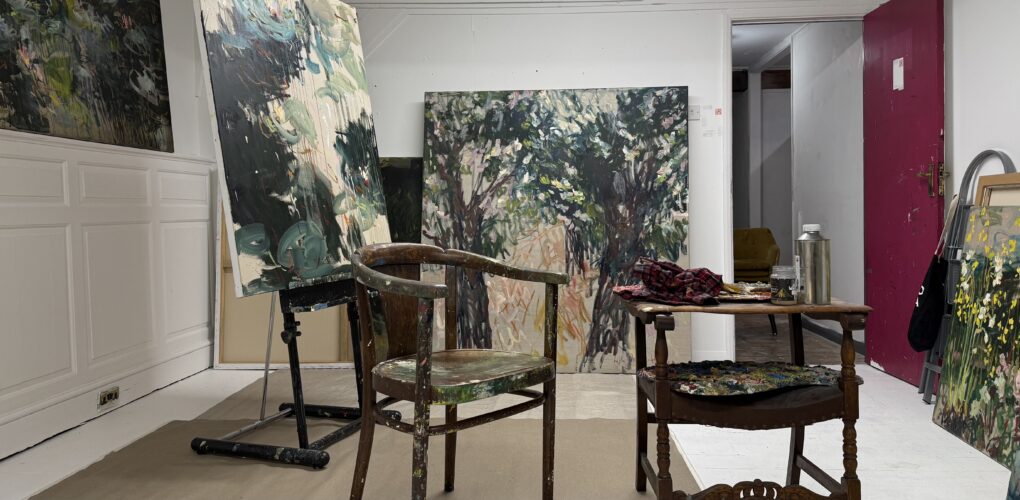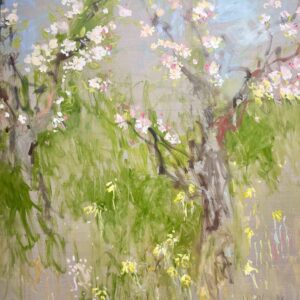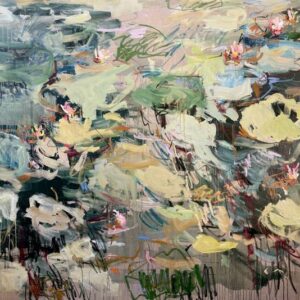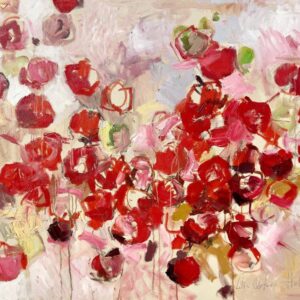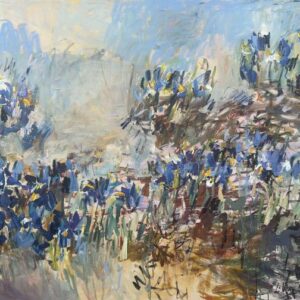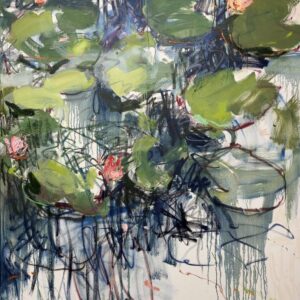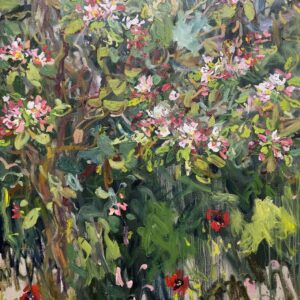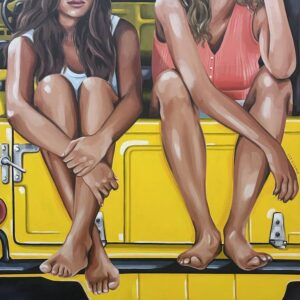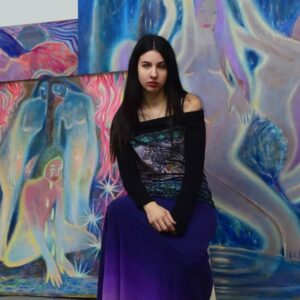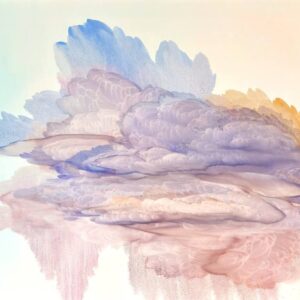One to Watch
 Lilia Orlova-Holmes’s Living Canvases
Lilia Orlova-Holmes’s Living Canvases
Curling, dripping, growing, breathing, living. Kent-based artist Lilia Orlova-Holmes’s sensorial works transpose the essence of Earth’s most verdant spaces onto canvas. An interlocutor for the natural world, Lilia goes a step beyond seeing to grasp the experience of being completely and totally one with nature.
Lilia’s career as an exhibiting artist spans more than three decades. Owing to her immense talent and experience, Lilia was handpicked by Saatchi Art’s curators to show at the Other Art Fair London and to feature in the Saatchi Art Catalog. Engross yourself in the all-encompassing calm created by May’s One to Watch.
Tell us about who you are and what you do. What’s your background?
My name is Lilia Orlova-Holmes. I am a painter based in Kent, and I have been an artist for about 35 years now. My friends from The Riverside Studios organized my first exhibition in London in a small gallery on King’s Road in 1993. After a period of working and exhibiting in London, I made a big shift, moving to Kent in 2012. I needed isolation. I came to a place where I knew no one, and no one knew me. Other than looking after my small family, I spent all my time in the studio, painting six to seven hours a day. Apart from my son and painting, I love long walks and caring for my garden.
What does your work aim to say? What are the major themes you pursue in your work?
Painting is an immersive experience for me, everything goes into it. After moving to Kent, I achieved a greater sense of concentration, and I was able to deepen my connection with nature. I do not try to depict nature; rather, I study nature so I can do what nature does. I want to directly experience the energy of growth, movement, and transformation. There’s a dormant seed in everything, including on a blank canvas. I want to create from that seed, starting from any point, finding an initial creative impulse, and transforming it so it comes to completion. I don’t judge my work, and I don’t look for perfection. There’s nothing perfect, just endless variety. Constant movement and transformation are perfect enough.
How do you hope viewers respond to your works? What do you want them to feel?
A completed painting is a living, breathing organism. Everything joins together to create it. I suppose I want my viewer to experience that universal connection.
How does your work comment on current social and political issues?
I don’t remark on social and political matters in my work. I feel the need to remove myself from constant overstimulation, anything that distorts my understanding of the universal truth. My mind is more receptive when I remain quiet and contemplative.
If you couldn’t be an artist, what would you do?
If I weren’t an artist, I would have loved to be an alchemist, looking for the elixir of life. Alchemists wanted to complete the world. They believed that with our divine spark, we could participate in the great act of creation. Alchemists also played a large role in the development of the pigments we use today in painting. Mixing together pigments to find something true to the sky, true to the force of a flower—that is the essence of the alchemical quest.
What are some of your favorite experiences as an artist?
You have to ‘love the process’ in painting, but it’s more than that. You have to commit yourself, free from distraction, to a total commitment to every moment of painting.
What was the best advice given to you as an artist?
I like one quote from Marc Chagall: “The world is good if you love it. I love love. Love helps me find colors. I can even say that it is love itself that finds color and that I only report that discovery on canvas. It is stronger than me. That is how I see life. It is beautiful, terrible. Strange also, probably because I look at it with the eyes of love…”
